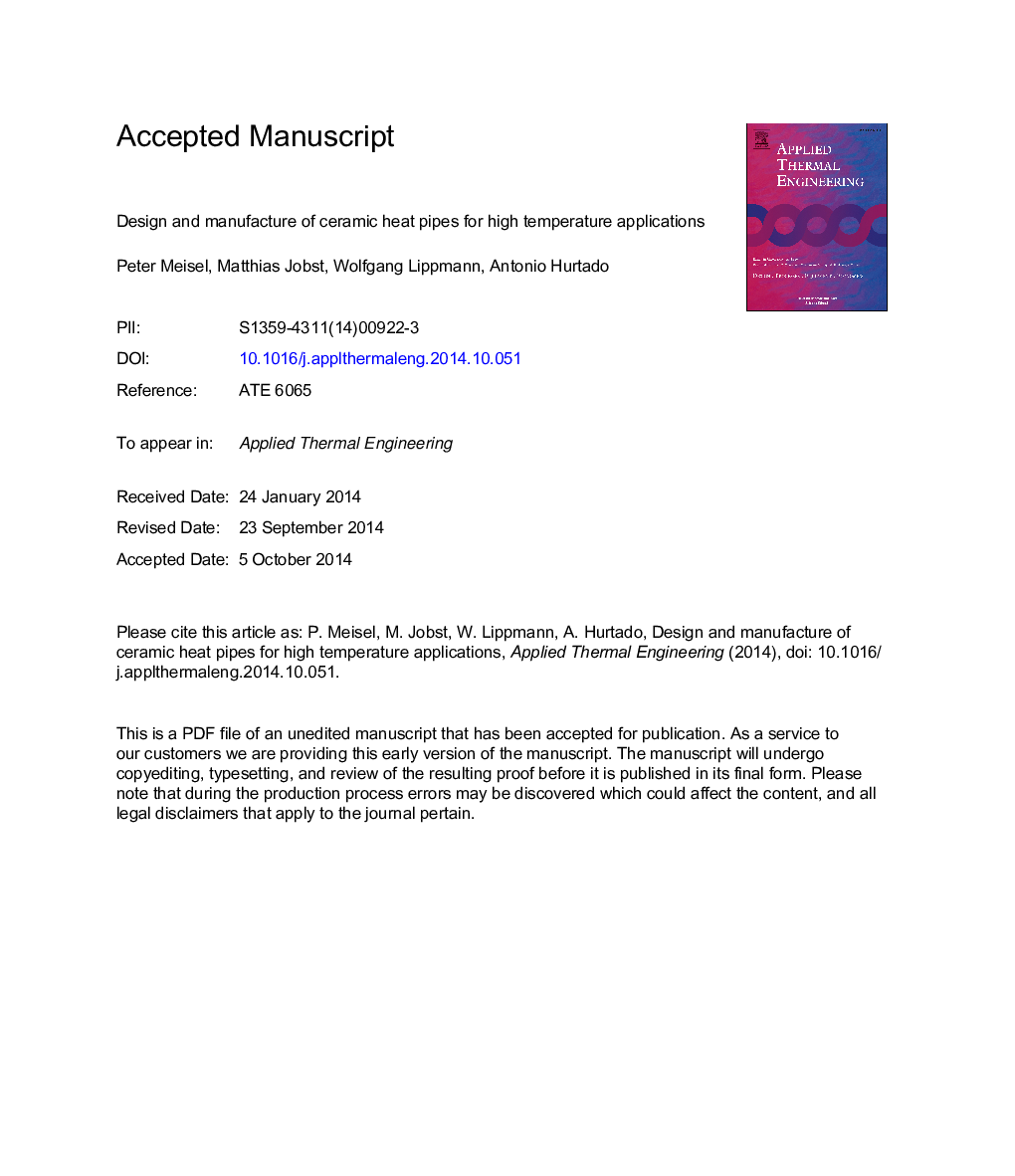| Article ID | Journal | Published Year | Pages | File Type |
|---|---|---|---|---|
| 645947 | Applied Thermal Engineering | 2015 | 21 Pages |
Abstract
Heat exchangers based on ceramic heat pipes were designed for use under highly abrasive and corrosive atmospheres at temperatures in the range of 800-1200 °C for high-temperature power-engineering applications. The presented heat pipes are gravity assisted and based on a multi-layer concept comprising a ceramic cladding and an inner metal tube that contains sodium as the working fluid. Hermetical encapsulation of the working fluid was achieved by electron-beam welding of the inner metal tube. Subsequently, closure of the surrounding ceramic tube was performed by laser brazing technology using a glass solder. Temperature resistance and functionality of the manufactured ceramic thermosyphons could be confirmed experimentally in a hot combustion gas atmosphere at temperatures up to 1100 °C. The ceramic tubes used had an outer diameter of 22 mm and a total length of 770 mm. The measured axial heat transfer of the ceramic gravity assisted heat pipes at the stationary operating point with cold/hot gas temperature of 100 °C/900 °C was 400 W. The result of the calculation using the created mathematical model amounted to 459 W.
Keywords
Related Topics
Physical Sciences and Engineering
Chemical Engineering
Fluid Flow and Transfer Processes
Authors
Peter Meisel, Matthias Jobst, Wolfgang Lippmann, Antonio Hurtado,
